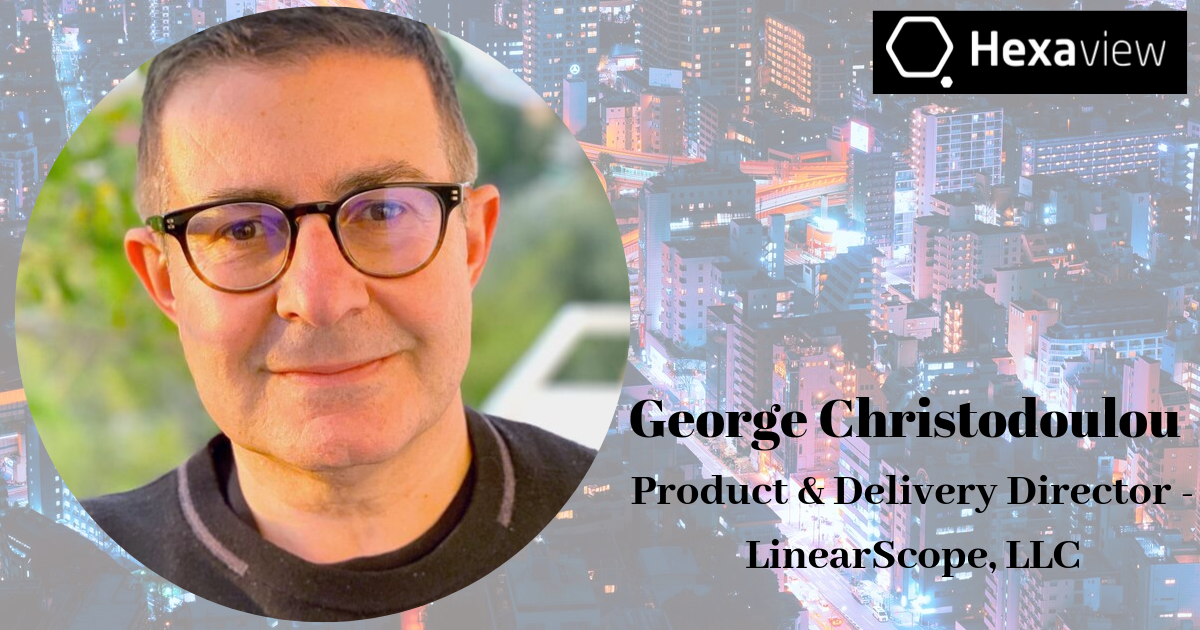Question:
Tell us about your first three jobs (e.g., First: waiter; Second: cashier; Third: credit analyst)
Answer:
- First: Math tutor at my university during my freshman year
- Second: Door-to-door computer salesperson (summer job in my early 20s)
- Third: C/C++ programmer (after graduation)
Question:
Please, introduce us to your firm.
Answer:
LinearScope is a company I formed with a friend in San Francisco back in 2000. Back then, silicon valley was experiencing its first (of many) growth spurs and there was a high demand for tech talent. Thru our network, we started sourcing Unix admins, developers and project managers to early internet pioneers like Yahoo, Excite@Home, pets.com, and others. Later on, LinearScope morphed into a solutions integrator and today we’re a global company with partners in three continents: N. America, Europe, and Asia.
Question:
What disappointments did you experience in your early career, and how did you deal with them?
Answer:
I learned that past performance is not an indication of future results. I learned the hard way that some stocks perform differently than others. And that when markets act erratically, there is no portfolio theory to explain what’s happening. So yes, when you think you understand the market, that’s when you need to take a couple of steps back, as an investor, and leave the investing to the professionals.
Question:
What turning points in your professional life significantly shaped your career?
Answer:
- Going to work at Advent Software, and learning about portfolio management and the advisory business
- Stepping up to take a technical lead role and realizing that I was now representing my team’s interest as opposed to my own personal interests
- My first exposure to HTML (±1996) and the realization right then and there that the internet was going to change the world.
Question:
How is your advisory strategy different from others? Is technology a differentiating factor?
Answer:
Technology is the differentiating factor. Everyone today has technology at their disposal, but it’s about leveraging technology to gain an edge. Of course if your applications are not integrated and much energy is spent in adapting to existing technology, then maybe it’s time to rethink your ROI.
Question:
What is your favorite city, and why?
Answer:
I’m torn between Paris and New York City!! Paris has a great quality of life but is challenging in terms of growing a business; NYC on the other hand seems to be a great balance of the two, but there is also very steep competition.
Question:
If you weren’t in the asset management industry, what would you be doing instead?
Answer:
I would be an Instagram influencer traveling the world and blogging about my adventures.
Question:
If you were to write a book about your success in the financial world, what would be your first piece of advice?
Answer:
“The greatest risk is not taking any amount of risk.” The advisory business is very competitive, and the current geopolitical environment makes it even more challenging, so one cannot afford to be too risk-averse these days.
Question:
What’s the biggest opportunity you intend to harness?
Answer:
The current trend for zero or near-zero development solutions, paired with cloud-hosting and SaaS present unique opportunities for us. These are two enablers that we intent to harness as we seek new customers and partnerships.
Question:
What is one piece of new technology that you think can help the whole advisory world?
Answer:
Outside the obvious choices of AI and Machine Learning – and much has already been written about these – another less-talked-about technology with equally disruptive potential is Digital Transformation, or more precisely the availability of cost-effective integrated digital platforms for the mid-market of any industry. Think of it as an operating system for the advisory business. Much like a smartphone has some basic features, yet lets you download apps to customize your experience, an integrated digital platform provides a CRM, a website builder, and several reporting capabilities right out of the box. You can build it up from there.
Question:
How can Americans, in particular, your firm, improve environmental sustainability?
Answer:
Again, through digital transformation. This is an area still in its infancy but it effects more or less everything we do. One example is that thru more efficient manufacturing, we will have less wasted products. Digitalization has already had positive effects, thinking about the end-of-life for corporate copiers, digital cameras, fax machines and large console computers alone! We focus too much on how our mobile phones are bad on the environment, yet we forget how much other hardware they have saved our planet from in just the past 10 years.



